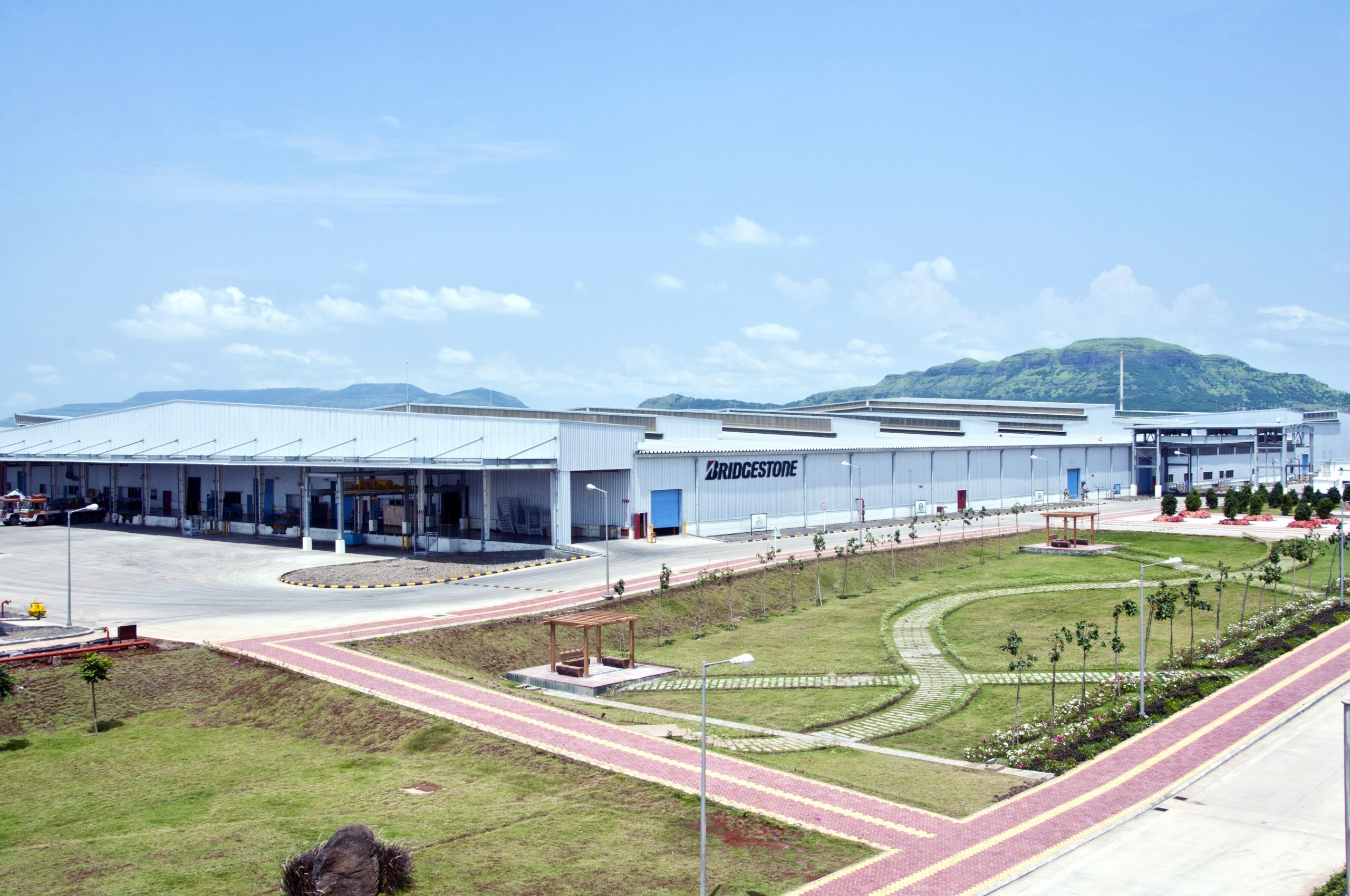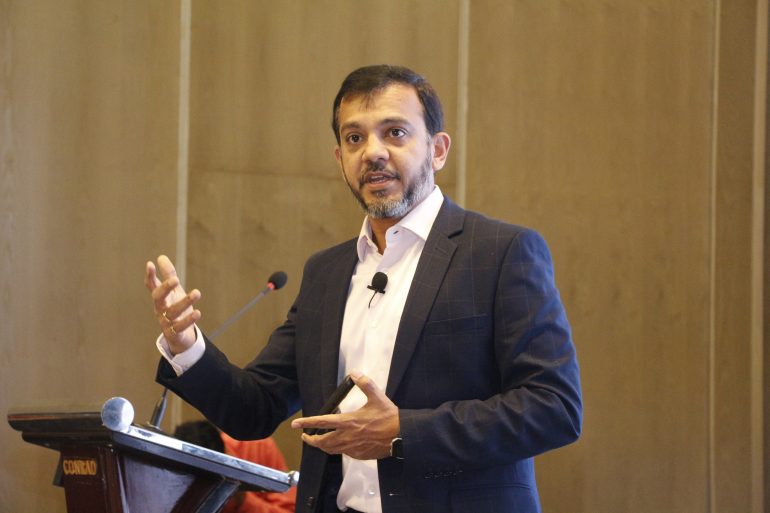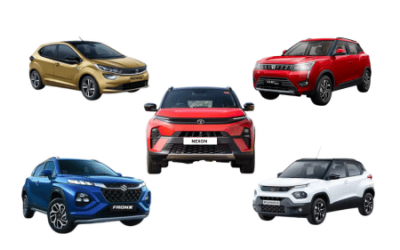Mr.Parag Saptute, Managing Director of Bridgestone India Private Ltd is an MBA graduate from Warwick Business School. Prior to Bridgestone, Parag worked in the mining, construction and engineering sectors. These took him to countries all over the world including Germany and Sweden. “I started out in sales but I’ve also headed up manufacturing, been responsible for global strategy at Sandvik and run a number of transformation projects,” he says. “This cross-function experience helped me gain an overview of the business here,” Parag shares.
He has a wide range of specialities in Strategy, Business Transformation, Change Management, Sales, Marketing, New Product Development and Commercialisation, Operations, Lean Manufacturing, Market Intelligence, Business Analysis and Modelling.
In an exclusive E-interview with Mr.Ravdeep Singh Chadha (Editor-In-Chief of Auto Insider), Mr.Parag Saptute has talked about his professional journey with Bridgestone and his inspiration to achieve in life.
About Bridgestone India
Bridgestone India is a subsidiary of Bridgestone Corporation, World’s leading Tyre and Rubber Products Manufacturer, headquartered in Tokyo, Japan. Bridgestone India started its operations in 1996. In March 1998 with the setup of its manufacturing facility in Kheda, Madhya Pradesh, Bridgestone achieved its objective of running Indian manufactured Bridgestone tyres on Indian Roads.
Bridgestone India further strengthened Manufacturing by setting up another facility in Chakan, Pune in 2013. Bridgestone’s global mission of ‘Serving Society with Superior Quality’ has been the foundation for the brand’s 20 glorious years in India.
Bridgestone announced its Worldwide Olympic Partnership in 2014, making a long-term commitment to the International Olympic Committee that continues through 2024. Through its business activities, Bridgestone will support this partnership by showcasing the values of community service, social responsibility, and respect for diversity that it shares with the Olympic Movement. Aligned to the global partnership, Bridgestone India joined hands with the Indian Olympics Association in 2017.
In addition to serving society with superior quality products, Bridgestone’s endeavors worldwide are also aimed at contributing to society beyond business. A brand with immense societal conscience, Bridgestone has a global CSR commitment of ‘Our Way to Serve’, which prioritizes ‘Mobility’, ‘People’ and ‘Environment’. Bridgestone India is completely aligned to this commitment and has contributed to various causes which help to build a better society.
Bridgestone India is dedicated towards a holistic growth of Business, People and Society and fulfilling the vision of its parent company of becoming the “World’s No. 1 tyre and rubber manufacturing company.”

Bridgestone India Plant
About the Company
1. Could you please give us a brief introduction about Bridgestone?
Bridgestone Corporation, headquartered in Tokyo, is the world’s largest tyre and rubber company. In addition to tyres, we also manufacture a broad range of diversified products, which include industrial rubber and chemical products and sporting goods. Our products are sold over 150 nations and territories around the world.
Bridgestone entered the Indian mobility space almost 22 years ago and has emerged as one of the most trusted brands by both OEs and consumers. It has two manufacturing plants in Kheda (Madhya Pradesh) and Chakan (Maharashtra) that produces passenger car radial tyres, trucks and bus radial tyres.
Bridgestone is also the worldwide sponsor of the Olympic Games and the only one headquartered in Tokyo, the host city for the 2020 Summer Olympics. From 2014 as an Official Worldwide Olympic Partner, it proudly supports athletes all over the world on their journey to the Olympic Games. Under its Olympics Partnership, Bridgestone India has collaborated with leading Indian athletes like Mary Kom, P.V. Sindhu, Sakshi Malik and Srikanth Kidambi. All our activities related to our Worldwide Olympic and Paralympic Partnerships are designed to empower people of all abilities to perceive through adversity and “Chase Your Dream.”
2. How many years has Bridgestone been into business and how many employees are
working as of now?
Bridgestone India Private Limited is a wholly-owned subsidiary of Bridgestone Corporation, Japan, the world’s largest tyre and Rubber Company. It commenced its India operations in 1996 with the setting up of a state of the art production facility at Pithampur industrial area, near Indore. Today, Bridgestone India has an employee strength of approx. 3100.
3. What is the mission and vision of Bridgestone and how big it is spread in the world in
terms of Export?
The Bridgestone Group’s mission is based on our founder’s belief that businesses must exist beyond making profits. We have to contribute to the society we operate in and therefore, the group’s global mission has been defined as “Serving Society with Superior Quality.” The mission extends to all activities that Bridgestone India undertakes. This is reflected in the high-quality products and services as well as our community outreach programmes. This also guides how the organisation manages its processes, facilities and people.
Our commitment is not driven by a profit motive but out of a sustained passion for improving how people move, live, work and play. Through this mission, we strive to be a company trusted by the world.
4. What are the expansion plans of Bridgestone in the near future?
We have recently inaugurated a major expansion with an expense of Rs. 350 crore at our plant at Kheda, Madhya Pradesh. With this expansion, the capacity of the Indore plant will go up to over 20,000 tyres a day by 2020. In 2017 we had announced that we would invest Rs 1940 crores in our India operations over the next five years. These investments will take our production in both the plants in India to 41,000 tyres a day by 2022.
About the Industry
1. How do you see the Indian Tyre Industry in the current market scenario?
These are challenging times for the Indian tyre Industry as same as the country’s automotive industry. The Indian automotive sector experiences cyclic fluctuation in demand and this effects the OEM sector. This has its corresponding impact on OE supplies by tyre manufacturers. India has a large aftermarket and this has made the tyre industry in good stead in the current circumstances.
2. What are the current trends and challenges in the Indian Tyre Industry?
Radialisation has been widely accepted across passenger car tyres and even the commercial tyres segment is gradually adapting to it. The latest trend is Tubeless tyres and they are here to stay. However, with CASE mobility we are looking at smart tyres to come in and in this front, Bridgestone globally is a pioneer in Digital Sensors in tyres allowing for improved management of tyre life and overall fuel efficiency.
3. How does GST and hike in the fuel prices impact the Indian Tyre Industry?
The system is still adapting to the GST regulations and our channel partners have faced a short term liquidity crunch in the process. However, GST has to a large extent been able to meet the objectives it set out to achieve and eventually it will be smooth sailing. The fuel prices, on the other hand, have had an impact on the buying power of the consumers and fuel-efficient tyres like Bridgestone’s ECOPIA can help alleviate this problem and customers
are realising this.
4. What major challenges do you see in the Indian Tyre Industry based on today’s economic trends?
The Indian automotive sector is cyclic in nature. A cyclic downturn combined with weak consumer sentiments results in auto manufacturers reassessing their demand for tyres. This, in turn, does impact the tyre industry.
Radialisation is one of the major challenges in the Indian tyre industry today. While passenger-car consumers have predominately taken to radial tyres but the switch in the commercial vehicles is somewhat slow. The challenge lies in convincing the commercial vehicle consumer about the cost benefits of switching to radials.
The tyre industry is also facing challenges due to high raw material prices especially the rising cost of the main ingredient – ‘natural rubber’. Another major concern is Chinese tyre manufacturers dumping tyres in India which affects the whole Indian tyre industry. Although the government has imposed anti-dumping duty, these cheap tyres are now making their way through illegal or illicit imports which is a major cause of concern.
5. What next big opportunity do you see in the Tyre Industry? Are the airless tyres will be
available soon?
The next big opportunity of the tyre industry is the “smart tyre”.This is a tyre that keeps track of its health. By this, I mean that the smart tyre keeps track of the pressure, heat and the tread and communicates the same with the consumer. By being informed of these parameters, the consumer can take appropriate remedial actions. This not only helps in extending tyre life but also improves the fuel efficiency of the vehicle thereby making it economically viable.
The major extension of this concept is the evolution of selling tyres as a service than as a product. This has also led to the development of newer business models such as Pay per Kilometres which extend a better value proposition to the consumers as compared to the traditional cost of ownership of tyres.
In India, while tubeless tyre has become a norm in the passenger vehicles. It is still in a nascent stage in the commercial vehicles segment. Although, I am hopeful that it will pick up faster in the coming years.
6. As there are many Chinese Brands now being promoted in India, what’s your take in the
rising competition from them?
Tyres for Indian roads have to meet the Indian regulated standards. Some of the tyres being brought into India under the guise of existing FTAs do not conform to these standards. In turn, passenger and vehicle safety is being compromised at the cost of cheap tyres.
7. Will the Electric Vehicles have any Impact on the Tyres? If yes, how is Bridgestone
preparing itself for that?
The electric vehicles are definitely a trend across the world. Bridgestone globally is taking a lead to be the first choice in this segment. The products are not only built with superior Japanese technology but also have advancements in terms of noise reduction and creating a premium experience for our consumers during each journey. We are working closely with leading OEMs across the world to develop the best product and solutions for EVs. One of the prime examples of this would be the fitment of our Ologic tyres with BMW I3 model.
About the Interviewee
1. Tell us about your professional journey and your association with Bridgestone.
Before joining Bridgestone India in 2017, I was associated with a global engineering group, garnering rich experience in various functions such as Sales & Marketing, Production and Strategy across geographies like UK, Germany and Sweden. Over the years, my learnings across functions and nationalities, and the exposure to diverse work cultures, have been a key influence on my leadership role. Bridgestone has been a trusted brand since its inception. And, I aim to develop this further and I have the support of a talented team with me to achieve this goal.

Mr.Parag Saptute, Managing Director of Bridgestone India Private Ltd
2. What are your key highs and key lows?
I really enjoy interacting with customers as they help me understand their needs much better so that we as an organisation can be a true partner in offering them solutions that create higher value.
On the other hand, witnessing customer grievances saddens me; however, I take these very seriously. This approach has helped us to turn this into an opportunity to improve ourselves and meet customer expectations.
3. What motivates and inspires you the most?
To do more each day and making a fundamental difference. Another key motivation for me is the inspiration I draw from the values of the organisation I am part of.
4. Name three people who inspired you in your life?
Elon Musk and Anand Mahindra are inspired as visionary business leaders. For that matter, all new entrepreneurs who have a passion for their ideas, ready to take the risk and make it as a success.
5. What is your suggestion for the new-age entrepreneurs who are just starting their business may be in your trade or different trade?
It is a bold path that they have chosen and there will be several obstacles to test their will. Resilience and perseverance are the two most important traits that will always get them through.
11




